* Juksun has won the 8th Hangul Text Typeface Creation Support, which is sponsored by the Bang-Il-Young Foundation and the Korean Society of Typography. Beta version has been released on Sandollcloud in March 2025, and the final release is scheduled for September 2025. Juksun aims to be expanded to two weights; Regular and Light, and three scripts; Hangul, Latin alphabet, and Hanja, the Korean ideographic character.
See the related article ▷▷▷
See the related article ▷▷▷
* 죽순은 방일영재단이 후원하고 한국타이포그라피학회가 주관하는 제8회 한글꼴창작지원사업 선정작입니다. 2025년 3월 산돌구름에 베타 버전이 출시되었고, 최종 버전은 9월에 출시될 예정입니다. 죽순은 Regular, Light 두 가지 굵기와 한글, 라틴 알파벳, 한국 한자 세 가지 문자로 패밀리를 확장하는 것을 목표로 하고 있습니다.
관련 인터뷰 기사 보러가기 ▷▷▷
관련 인터뷰 기사 보러가기 ▷▷▷



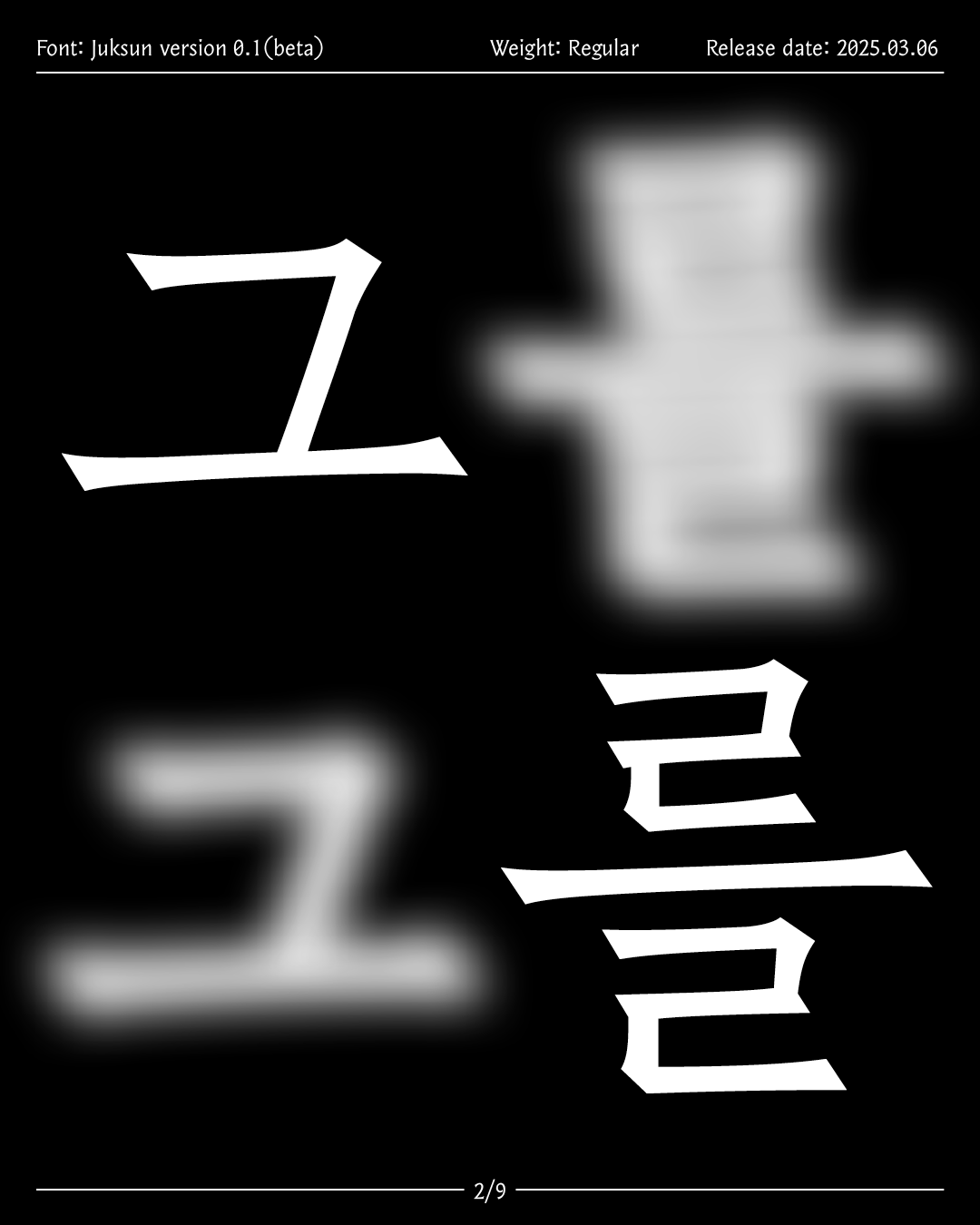

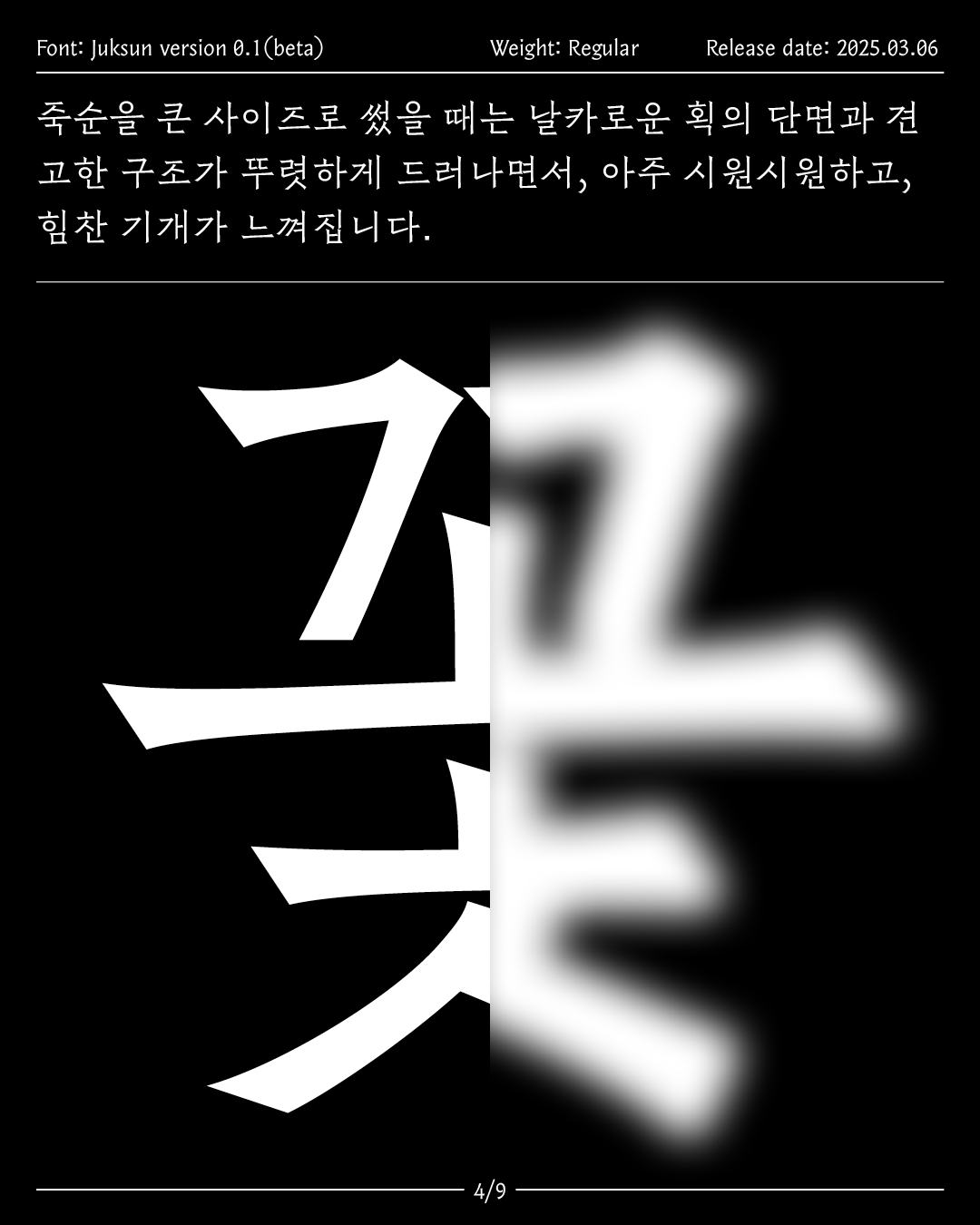


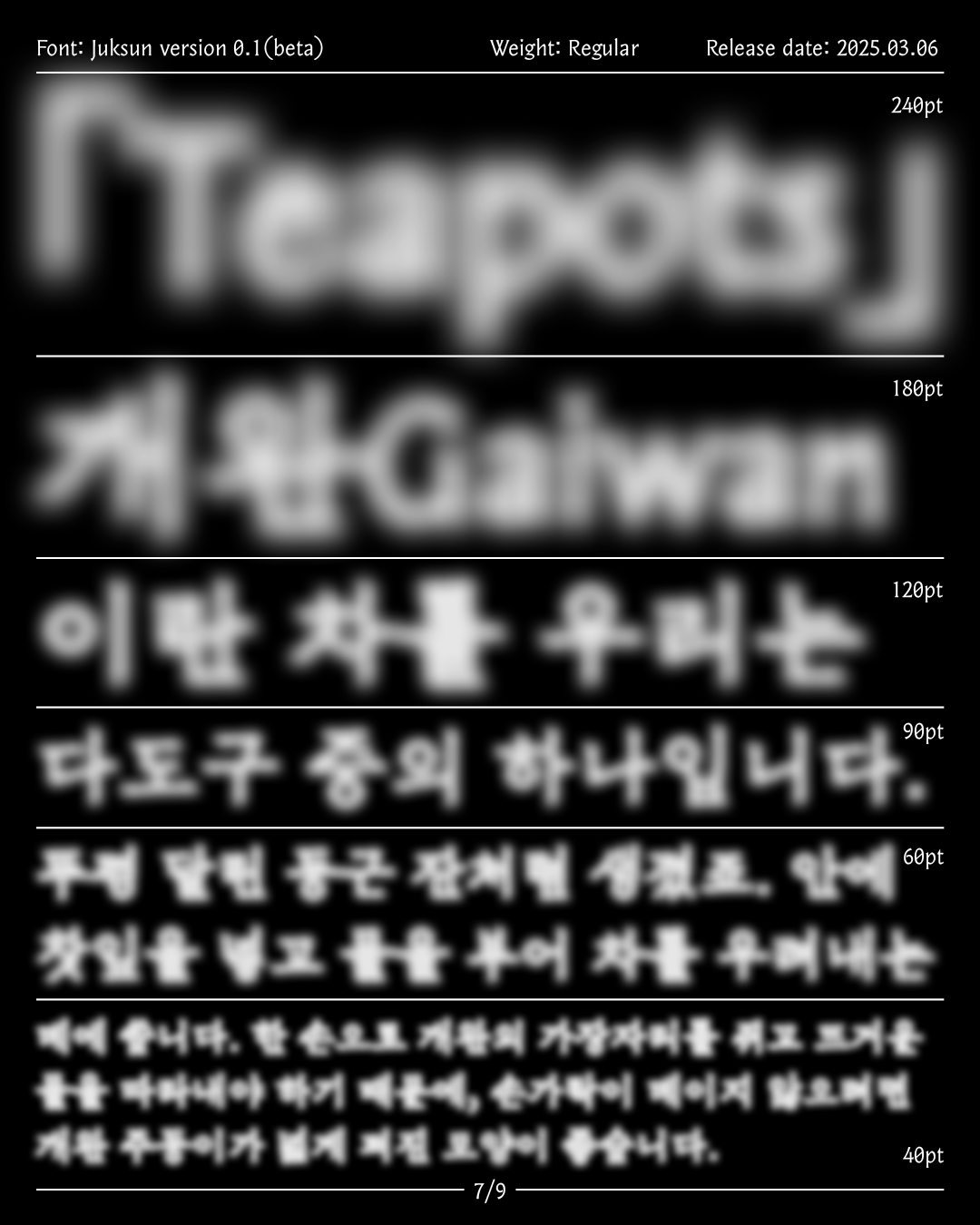
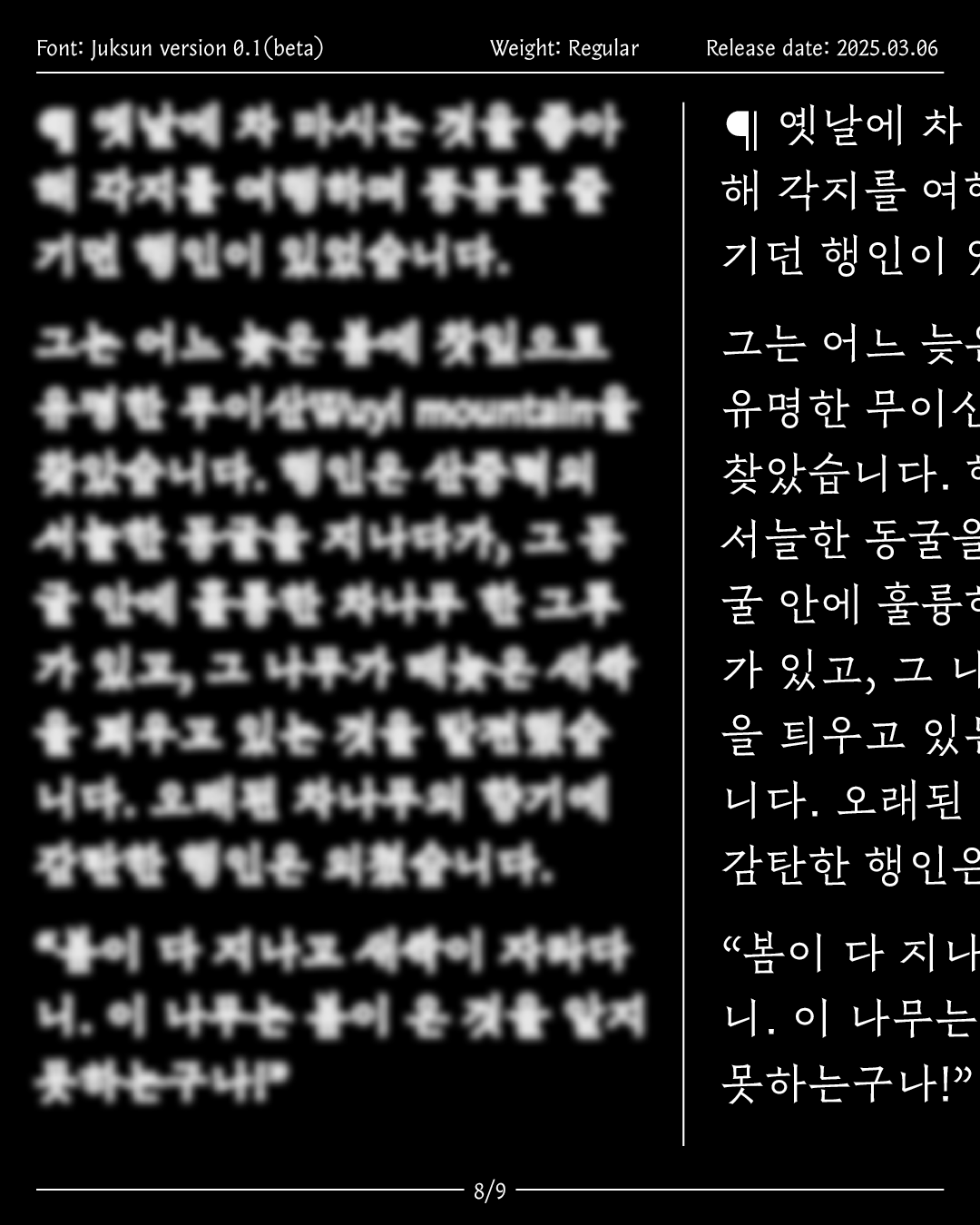





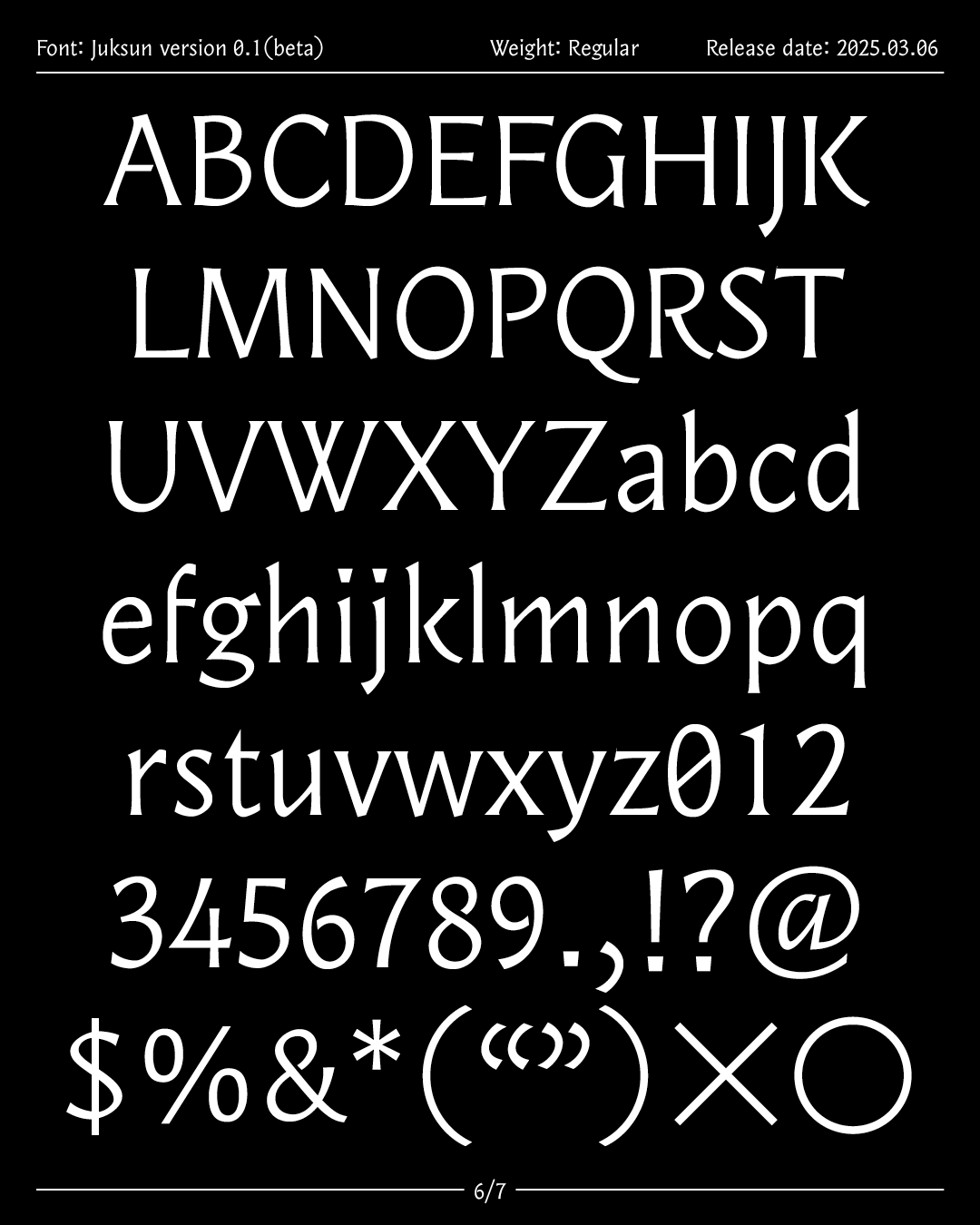





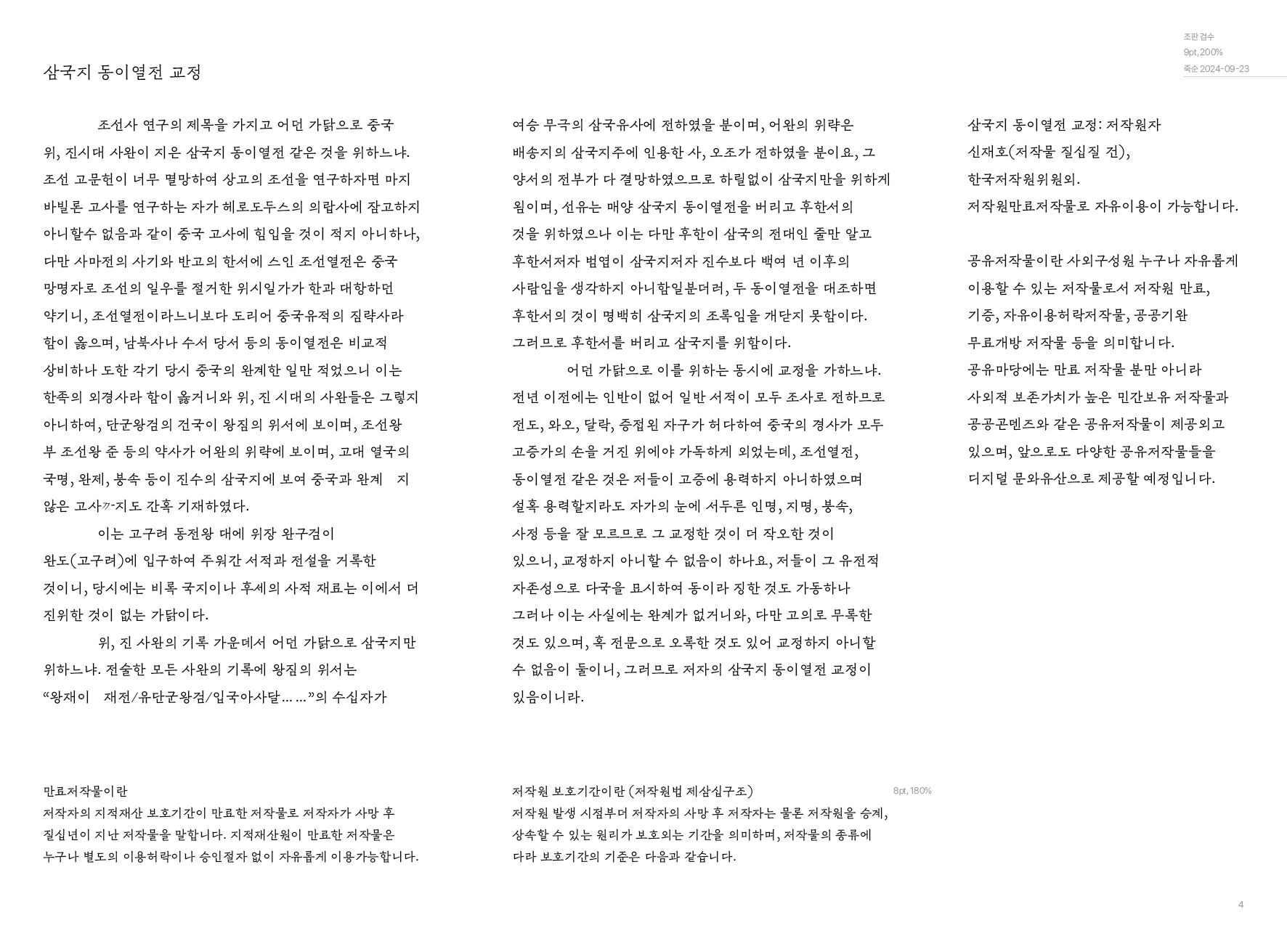
Juksun, which means bamboo shoot in Korean, is a typeface for body text resembling the lean and lively look of a bamboo forest. The original drawing of Juksun began with a request for a body typeface with a straight, robust, and sharp impression.
The crispness of this typeface has both contemporary sharpness and traditional elements from Korean woodblock prints. The terminal cuts borrow their angles from the historical Hangul woodcut letterforms, as well as the Chinese ideographic character style, Fang Song Ti.
Another distinctive feature of the typeface is the different sizes of characters. Characters with fewer strokes, such as ‘그’ and ‘의’, take up relatively small areas, while more complex characters, such as ‘를’ and ‘월’, take up much larger areas. These subtle jaggies are rare attributes in contemporary sans serif Hangul typefaces created with digital tools. However, this typeface was designed with the expectation that such unevenness would not only make it easier to read on screen, but would also add a unique vibrancy to the typeface.
The crispness of this typeface has both contemporary sharpness and traditional elements from Korean woodblock prints. The terminal cuts borrow their angles from the historical Hangul woodcut letterforms, as well as the Chinese ideographic character style, Fang Song Ti.
Another distinctive feature of the typeface is the different sizes of characters. Characters with fewer strokes, such as ‘그’ and ‘의’, take up relatively small areas, while more complex characters, such as ‘를’ and ‘월’, take up much larger areas. These subtle jaggies are rare attributes in contemporary sans serif Hangul typefaces created with digital tools. However, this typeface was designed with the expectation that such unevenness would not only make it easier to read on screen, but would also add a unique vibrancy to the typeface.
죽순은 대나무 숲의 힘차고 날렵한 인상을 닮은 본문용 서체로, 어린 대나무를 뜻하는 단어에서 이름을 따왔습니다. 죽순은 시원시원하면서도 견고하고 날카로운 인상의 본문용 서체에 대한 수요가 있으리라는 생각에서 출발했습니다.
죽순은 현대적인 또렷함과 한국 목판화에서 차용한 전통적인 요소를 함께 갖추고 있습니다. 획의 끄트머리 부분은 한글 목판본에서 보이는 날카로운 획의 형태와 중국 방송체에서 보이는 획의 각도에서 영감을 받았습니다.
죽순의 또 다른 눈에 띄는 특징은 작아야 하는 글자들은 작게 그려지고, 커야 하는 글자들은 크게 그려졌다는 점입니다. 그 결과 개별 문자들의 크기가 각기 다릅니다. '그', '의'와 같이 획수가 적은 글자는 상대적으로 작은 면적을 차지하고, '를', '월'과 같이 복잡한 글자는 훨씬 더 큰 면적을 차지합니다. 이러한 미묘한 들쭉날쭉함은 디지털 도구로 만든 현대 민부리 한글 서체에서는 보기 드문 특성입니다. 이 서체는 이러한 불균질이 화면 위에서 글자를 읽으려는 독자의 눈을 잘 잡아둘 수 있을 뿐 아니라 서체에 생동감 있는 표정을 더할 수 있으리라는 가설에서 출발했습니다.
죽순은 현대적인 또렷함과 한국 목판화에서 차용한 전통적인 요소를 함께 갖추고 있습니다. 획의 끄트머리 부분은 한글 목판본에서 보이는 날카로운 획의 형태와 중국 방송체에서 보이는 획의 각도에서 영감을 받았습니다.
죽순의 또 다른 눈에 띄는 특징은 작아야 하는 글자들은 작게 그려지고, 커야 하는 글자들은 크게 그려졌다는 점입니다. 그 결과 개별 문자들의 크기가 각기 다릅니다. '그', '의'와 같이 획수가 적은 글자는 상대적으로 작은 면적을 차지하고, '를', '월'과 같이 복잡한 글자는 훨씬 더 큰 면적을 차지합니다. 이러한 미묘한 들쭉날쭉함은 디지털 도구로 만든 현대 민부리 한글 서체에서는 보기 드문 특성입니다. 이 서체는 이러한 불균질이 화면 위에서 글자를 읽으려는 독자의 눈을 잘 잡아둘 수 있을 뿐 아니라 서체에 생동감 있는 표정을 더할 수 있으리라는 가설에서 출발했습니다.